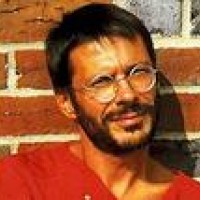

The original airport was built by the Nazis in 1936. I also worked in a hangar on the former Royal Air Force Station in Gatow, which today houses part of the Military History Museum. Instead of an altar, though, there was a huge machine in the middle of the space: a corn mill which reminded me of Charlie Chaplin’s Modern Times (1936). I worked on top of a corn silo in Moabit in a space which, cathedral-like, opened up in the middle to a ceiling height of about eight meters. I believe this is a fantastic characteristic of Berlin: because of its historic situation, I was able to continuously discover places which had not been used as studios before. Today, the wall is gone and the prison has been converted into a housing project. To walk past the old prison wall along areas of industrial waste was very inspiring. I had a studio in a former Aga Film building next to the Strafvollzugsanstalt Rummelsburg. I was able to move to areas in the eastern part of town, for instance, which were invisible to the radar of the art scene at that point. Different in terms of architecture, historical context, feeling and physical location on the city map.

I have worked in different studios all over Berlin. What is most important to you in a studio, and why? How long have you lived and worked in Berlin? These are bodies that have been broken but built up once more-restored but never fully repaired. Arms, legs and ghostly faces appear and disappear, gathered in layers that highlight the spaces between them. Plessen works frequently with stencils, using these cutouts as a starting point for his paintings. The pioneering work of doctors at the time in their attempts to reconstruct the broken and maimed body, particularly in assisting soldiers with facial injuries, paved the way for modern-day plastic surgery. The introduction of automatic weapons brought with it a new ferocity of violence and injury, whereby hundreds could be wounded with little more than a trigger-pull from a distance. Plessen’s research in recent years has focused on the horrors of World War One, exploring the physical traumas and the long-term psychological wounds inflicted. The body is cut, taken apart and re-stitched, as if each part belonged to a child’s puppet.

The figures that twist and fragment in the paintings of Magnus Plessen seem to possess both mechanical and deeply human qualities a curious match of fleshy limbs and synthetic form.


 0 kommentar(er)
0 kommentar(er)
